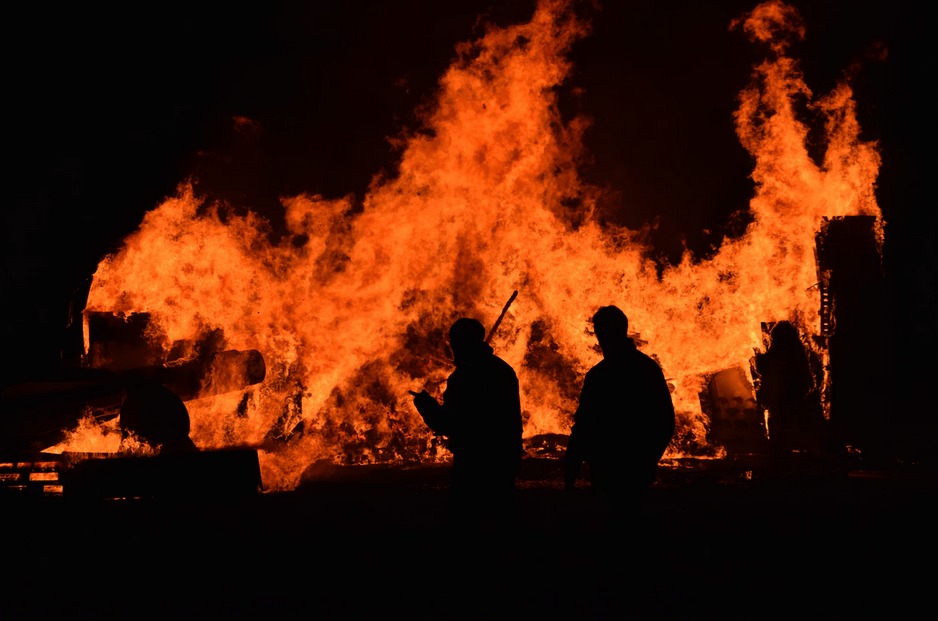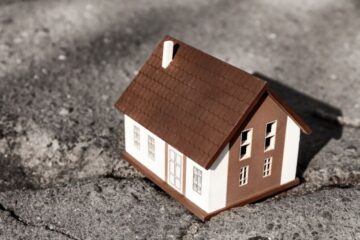How to Reduce the Risk of Fires in the Home

Fires are one of the most common house tragedies. Every year, about 4,000 Americans are killed in fires, many of which are caused by preventable factors such as:
- Damaged chimneys
- Faulty electrical wiring
- Dryers
- Kitchen oil
- Combustibles
- Human carelessness, such as smoking in bed or leaving a candle burning unattended
How to Reduce the Risk of Fires in the Home
To guarantee that your home is fire-safe, follow these rules.
- Install smoke alarms on every floor: Place them right outside each bedroom, near (but not in) the kitchen, at the top of open stairways, and at the bottom of enclosed stairways on the wall or ceiling. Once a month, test them, once a year, replace the batteries, and once every ten years, replace the alarm itself.
- Have fire extinguishers on hand: Install fire extinguishers with an ABC rating in the kitchen and garage. Ascertain that each adult family member understands how to utilize them.
- Plan escape routes: Every room should have at least two exits. They should be practiced with your family.
- Fireproof the inside of your home: To do so:
- Organize your storage spaces. combustible liquids should be kept in well-ventilated spaces.
- Examine the electrical wiring. Ascertain that all outlets have cover plates and that insulation does not come into contact with exposed wiring. Extension cords and outlets should not be overloaded.
- Keep candles and other open flames away from draperies, furniture, and other combustible materials. A candle should never be left alone.
- Have your heating units tested and cleaned by a professional once a year.
- Cooking meals in the kitchen should never be left unattended. Cooking with very hot oil or grease should be done with caution.
- Putting flammable substances in the garbage is not a good idea.
What to Do During a Fire
If you have a fire within your house, follow these steps:
- Get out as soon as possible since fire spreads swiftly.
- Follow the escape routes you’ve planned ahead of time.
- Stop, drop, and roll to put the fire out if any of your clothing catches fire.
- Crawl as close to the ground as possible.
- Before opening a door, test it with the back of your hand. Feel for heat in the doorknobs and the top of the door. Don’t open the door if it’s hot.
- Attempt to flee through a window. If you can’t, a white sheet or towel can be hung from the window to warn firefighters.
- Close doors as you go to prevent the fire from spreading.
How to Reduce the Risk of Wildfire Damage
Wildfires are a natural phenomena that occurs in wilderness areas that support tree growth, while they are also triggered by human error. Wildfires pose a threat because they can swiftly spread to residential or agricultural regions. Wildfires can be sparked by a variety of factors, including:
- Lightning
- Drought
- Human carelessness
- Arson
- Heat waves
To find out if you’re in a wildfire hazard zone, call your local fire department. Because the flora in dry, western regions like California and Wyoming is extremely flammable, they have the most wildfires each year. If you reside in a place where wildfires are common and your home is near a wilderness region, take the following precautions:
Fireproof the Outside of Your Home
- Because sparks carried by the wind can ignite your roof, it is the most vulnerable element of your house. Consider replacing the roof with a fire-resistant material.
- Clear your gutters of pine needles and other debris.
- Cover your chimney outlet or stovepipe with a nonflammable screen with a mesh size of 1/2″ (or smaller).
- Fire-resistant material should be used to enclose the undersides of balconies and decks.
- Only use windows that are double- or triple-glazed (paned). From 30 feet away, the radiant heat from a wildfire can burn furniture inside your home.
- Make sure your house number is visible from the street and that emergency vehicles can access your driveway.
Create Defensible Space
The term “defensible space” refers to a zone around the outside of your house that prevents a fire from spreading to the real structure. Defensible area, in particular, breaks up the path of plants that allow the fire to spread. Defensible space also provides a safe place for firefighters to suppress a fire. To establish a defensible space around your property, follow these steps:
- Remove flammable vegetation from around your home: A minimum of 100 feet of clearance is usually recommended, but verify with your insurance provider.
- Trim tree branches: At least 6 feet from the ground and 10 feet from your chimney, tree branches should be. Remove any dead trees or branches, and make sure that no branches are allowed to dangle over the roof. If there are any tree branches near electrical lines, contact your utility company for assistance.
- Cut your grass: Make sure your grass is never more than 6 inches tall.
- Remove dry grass, brush, or dead leaves from the immediate perimeter of your home: This trash is especially combustible. The more area you clear, the better, but at least 30 feet is required.
- Consider planting fire-resistant plants: Request recommendations from your neighborhood nursery or landscaper.
- Keep firewood away: Firewood should be stacked at least 30 feet away from your house.
What to Do in the Event of a Wildfire
If a wildfire threatens your home, take the following precautions:
- From your neighborhood, know at least two escape routes.
- Any cracks or openings in your home should be sealed. Vents, windows, eaves, attic doors, and pet doors are all examples of this.
- Move any flammable material, such as woodpiles, grills, and patio furniture, outside of your defensible space.
- Any flammable curtains should be removed from your windows.
- Reduce radiant heat by closing curtains and blinds.
- Turn off the gas.
- Gather your valuables and prepare to flee quickly.
If you have to flee because of a wildfire:
- Turn on all of the lights inside and out.
- Close your doors and windows but leave them unlocked. This will make it easier for firefighters to get in.


